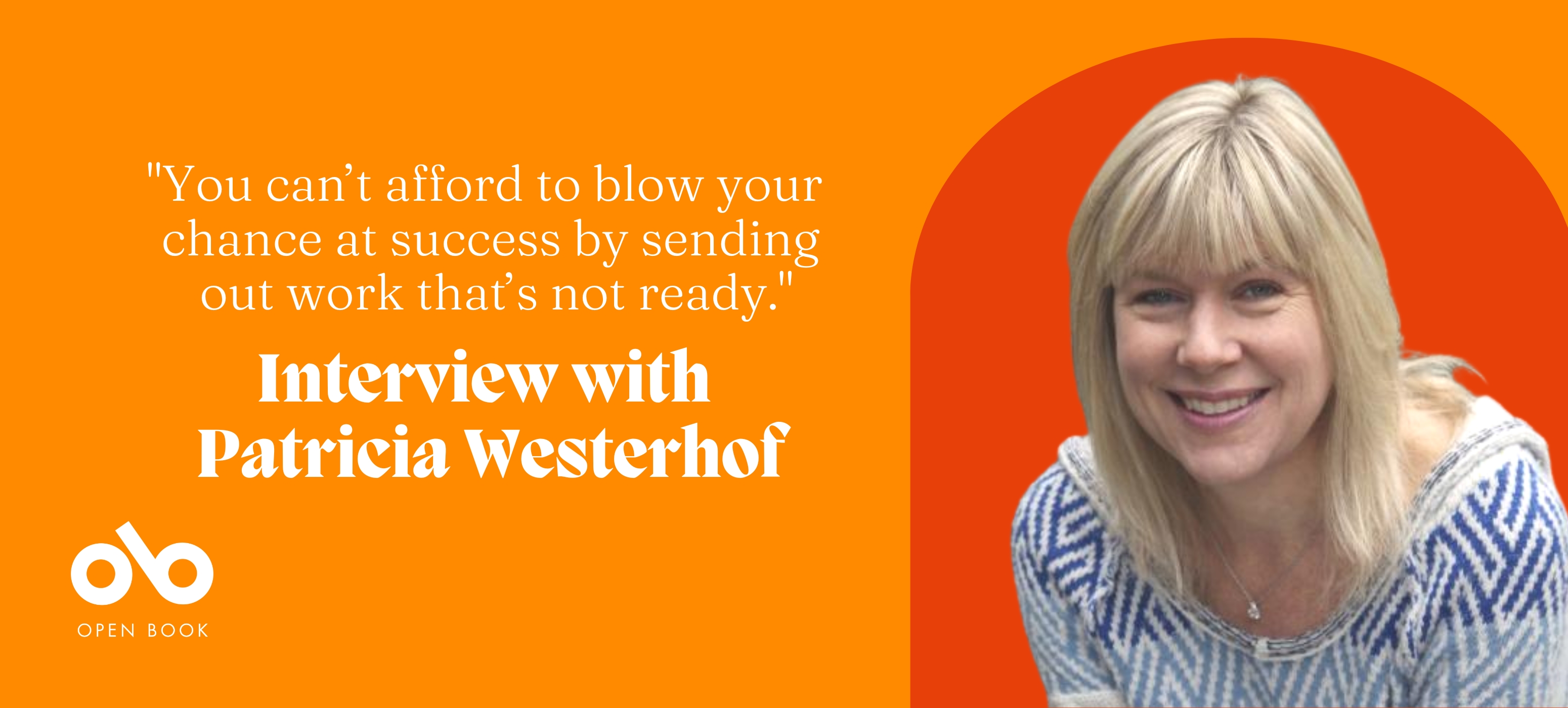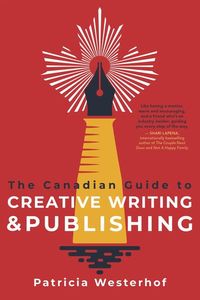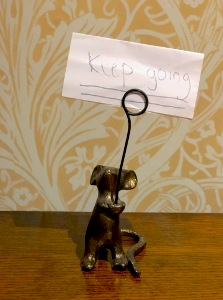How to Get Published in Canada Today: A Conversation with Patricia Westerhof
With three decades of experience teaching creative writing under her belt as well as three acclaimed books, Patricia Westerhof is a very good person to talk to about how to get started (or move forward) in writing and publishing.
Now she's sharing her expertise in an easy to read, entertaining, and accessible way with the publication of The Canadian Guide to Creative Writing and Publishing (Dundurn Press, forthcoming January 17), just in time for all of us who made New Year's resolutions to make 2023 a year where our writing lives thrive.
In the guide, Westerhof gives practical guidance that encompasses both craft (including how to make your voice, sentences, and characters the best they can be) and career (from navigating queries, agents, and publishers to industry standards and more). A welcome update from past guidebooks, The Canadian Guide to Creative Writing and Publishing meets writers where they are in a new, changed publishing landscape and gives concrete tips on navigating a world that sometimes suffers from gatekeeping and unintuitive practices.
We got to speak to Patricia about her own writing and publishing as part of our Going Pros and Cons interview series. She tells us about the CanLit icon in whose presence she got tongue-tied, shares her advice for writers trying to get published for the first time, and shows us the short and simple sign she created to guide her on her own writing journey.
My worst public reading or event experience:
After publishing a rather obscure collection of short stories with a small Canadian independent press, I was invited to speak at a large American literary festival because of a connection I had with an event organizer. My talk was surprisingly well attended, but then I proceeded to the onsite bookstore, where I was due to sign books. Authors were signing in pairs, and the author for my time slot happened to be that year’s winner of the Newbery Medal, a prestigious prize for the best children’s book of the year. Her line snaked out the bookstore, and her fans arrived with armfuls of the book, gushing about how they planned to give a copy to every kid they knew. I had one person come to buy my book and get it signed. I was pretty green at that stage in my career, so I felt like I needed to stay put in this awkward situation, rather than hightailing it to the coffee shop and seeking refuge with other lesser-known writers. It was a very long hour.
The person or writer I met who I was most excited about:
In 2009 I heard Alice Munro speak at the PEN Canada benefit at Harbourfront. I’d been a fan for decades by then though I’d never met her in person. She’d agreed to sign books after the event, but only for a limited number of people. When the talk was over, I was just short of rude in charging for the exit doors to get to the signing line. As Alice signed Too Much Happiness, her latest collection of stories, I told her that I had just had my first collection of short stories (Catch Me When I Fall) accepted for publication. Alice congratulated me, and said, “I’m really glad you’re writing short stories. I think it’s a remarkable form, don’t you?” I felt tongue-tied in her presence, and I think I just nodded. I wish I’d said, “It is, in your hands.”
The thing that surprised me most about the publishing process:
With my first book, I was surprised by how much work and expertise it takes to produce and sell a book. I knew little about design or even the different stages of editing that books go through in traditional publishing, let alone publicity and marketing. It felt humbling to have so many people involved in getting my artistic endeavour out to readers.
The advice I would give someone trying to get a book published for the first time:
I spend a lot of time talking about this in The Canadian Guide to Creative Writing and Publishing and explaining the steps to take. In brief, you need to polish your manuscript—it should go through multiple revisions. Serious writers seek out critical feedback from editing partners or beta readers before they submit to agents or editors. The vast majority of manuscripts are rejected, so you can’t afford to blow your chance at success by sending out work that’s not ready.
Second, writing is an art, but publishing is a business. Don’t wait to be discovered. Getting published doesn’t just happen, even if you’re extraordinarily talented and have an amazing manuscript. So, while you are perfecting your craft and finessing your manuscripts, you should learn everything you can about the publishing industry. Then, using that knowledge, make a concrete plan for getting published.
My least favourite part of the publishing process:
I find the final stages just before a book goes to press a slog. I like working with an editor on substantive edits. But after that, things get finicky. The book goes to a copy editor who scrutinizes the manuscript looking for inconsistencies and errors. My eyes glaze over when I read my copy editor's question about whether a Level 1 heading should be changed to a Level 2 heading, and I have to force myself to care. At the same time, I'm very grateful that there are people who have an eye for such details, and I’m indebted to the copy editors and proof readers who have caught mistakes and improved my books.
Your CanLit News
Subscribe to Open Book’s newsletter to get local book events, literary content, writing tips, and more in your inbox
What I think about literary awards:
Literary awards, like all awards, are lovely for the people who get them. They boost the winning author’s morale, reputation, and, in some cases, sales. But does an award necessarily mean that the winning book is superior to the other short-listed, long-listed, or even entirely overlooked books? I don’t think so. While some writing is qualitatively better than other writing, the relationship between reader and book is also personal and subjective. If you’re in a book club, you’ve probably experienced feeling incredibly moved by a book—you can’t stop thinking about it—but your friend says, “Meh, it didn’t do anything for me.” Even a multi-award-winning literary classic doesn’t land with every reader. So awards are nice, but authors need to find their own readers. Find the people who get what you do in your writing and connect with your books. That’s what’s meaningful.
What I think about writing grants:
Applying for writing grants is a bit like buying raffle tickets—your chances of winning are slim. Still, the application process can benefit you even if you don’t get a grant. The grant deadline can boost your discipline and productivity as you prepare your sample chapters. And introducing your book in the project description portion of the grant application will force you to put into words exactly what the book you’re writing is about. The paragraphs you write might be perfect for a query letter in the future.
The thing(s) I need at/in my writing space:
So little, really. I’ve only recently gotten a dedicated workspace in my house, a cozy room filled with light and books and vintage objects that I love. But, to be honest, when I’m deep into writing, I see none of it. My eyes are focused on my laptop screen, scrutinizing the sentences there or envisioning the world I’m creating. Maybe the most useful thing is this little sign I wrote myself years ago when I was trying to finish my first novel. It sits on my desk just to the left of my computer, and it’s helped me push through many a difficult section in my writing projects.
_______________________________________________
Patricia Westerhof is the author of Catch Me When I Fall and The Dove in Bathurst Station and co-author of The Writer’s Craft. She has taught writing for more than thirty years, working with writers of all ages, from teens to seniors. She lives in Toronto.






